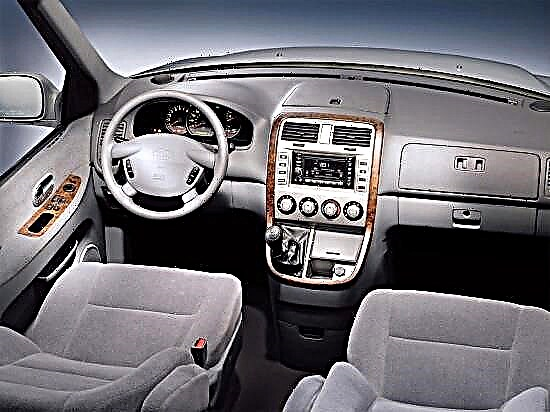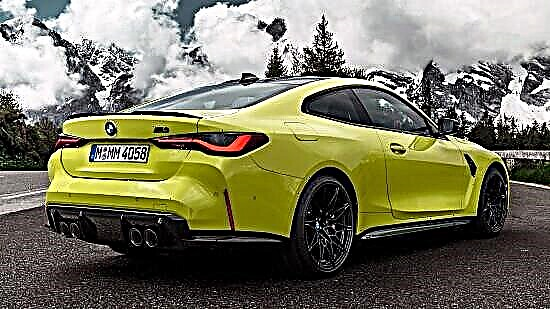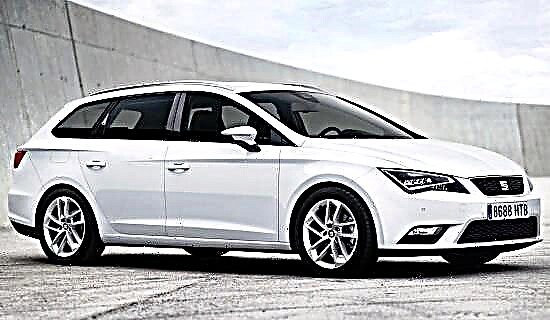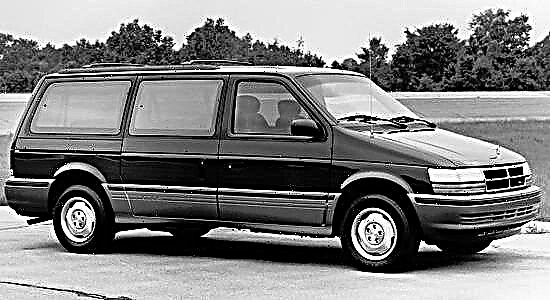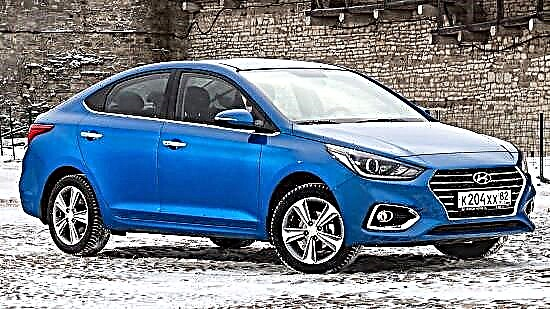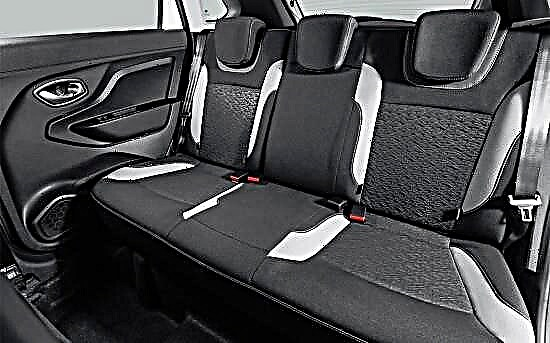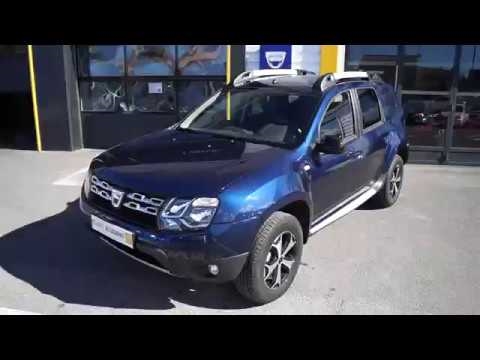Ratings of cars and auto products
Reviews, comparisons & tips for motorists
Some readers will immediately reject such a comparison, because both models, although they belong to the class of urban SUVs, belong to different "weight categories", in sports terms. Indeed, the Duster is a budget crossover aimed at the mainstream. The Japanese, on the other hand, is distinguished by an increased level of comfort and cross-country ability, close to a real off-road.
The cost of both models differs significantly, but are the differences really that great in other indicators? Let's try to find out.
Technical features of the models
In principle, both cars have engines with comparable characteristics, so we chose these options for testing. Renault Duster has a restyled modification with a two-liter engine, four-wheel drive and a manual transmission, Toyota RAV4 has a version with the same engine and transmission, but without all-wheel drive.
| Specifications | RAV4 | Duster |
| Available colors | White, Pearl White, Silver Metallic, Light Brown Metallic, Black, Red, Gray, Steel Metallic, Blue, Dark Red Metallic | Brown walnut, white ice, gray platinum, light basalt, black pearl, blue mineral, orange, khaki, dark chestnut |
| Build country | RF, Japan | RF |
| Initial cost, million rubles | 1,6 | 0,7 |
| Gearbox type | Manual transmission | Manual transmission |
| Drive unit | front | 4WD (full) |
| The volume of the power unit, l. | 1,986 | 1,998 |
| Developed power, l. from. | 146,0 | 143,0 |
| Max cr. moment, n * m at rpm | 187/3600 | 195/4000 |
| Fuel tank capacity | 60 l. | 50 l. |
| Luggage compartment volume, l. | 577,0 | 408,0 |
| Weight, t. | 1,555 | 1,370 |
| Length, cm. | 461 | 432 |
| Height, cm. | 167 | 163 |
| Wheelbase, see. | 266 | 267 |
| Clearance, see | 19,7 | 21,0 |
| Wed fuel consumption, l. | 7,7 | 7,8 |
| Rear tire size | 215 / 65R17 | 215 / 65R16 |
Exterior
Comparison of any cars based on the study of appearance is a thankless task, because there is no dispute about tastes, and for many potential buyers all cars are alike. Nevertheless, there are always differences, albeit minimal ones. And if so, then a discussion of the exterior is not superfluous.
Both the Duster and RAV4 have such individual characteristics, they differ from each other and from other cars.
If we take, for example, a Japanese crossover, then it is characterized by a slightly elongated front end, with the presence of a very narrowed head optics unit - this is a characteristic feature of many Asian cars. The most recognizable part of the RAV4 is the radiator grille: it is so narrow that it is doubtful whether it copes with its immediate duties, cooling antifreeze? But the bumper here is high and massive, and a significant part of it is eaten up by the air intake.
The view in profile is remembered by the roof that goes down sharply, which gives impetuosity to the aggressive SUV. At the back, it is fashionable to note the protruding wing and an interesting shape of the optics. The bumper here is surprisingly narrow, reinforced with a metal strip.
Duster is also a guy. He has a wide enough radiator grill, smoothly merging into the head optics unit, almost square. The center grille is decorated with a wide chrome stripe with the brand's logo. The bumper is massive, but most of it is occupied by the air intake grille. The SUV profile is remembered by the convex wheel arches and the non-standard shape of the rear window. The rear view is also quite unique: the polygonal shape of the glass, an unusual-looking metal insert on the bumper and a massive nameplate with the model name.
If we compare the cars in size, we get very interesting facts: the RAV4 is 30 centimeters longer, but its rival is 15 cm wider and slightly taller, the Frenchman has a slightly larger wheelbase.
In general, as we said, it is difficult to say which is better when comparing the exterior of the Duster and the RAV4.
Salon and trunk
If from the outside both crossovers look quite dignified and compete on equal terms, then inside the picture changes dramatically and Duster in the blink of an eye becomes an “ugly duckling”.
The RAV4 is doing better here: the quality of the finishing materials, and their fit, ergonomics and comfort are beyond praise. However, there is also a lot in common with the French opponent: this is a multifunctional steering wheel containing a relatively small number of control keys, an analog "tidy" with a small display of the on-board computer. Toyota has a much more compact center console, while the multimedia screen is larger. Renault has a small display, but round deflectors take up a lot of space.
Ergonomics and the RAV4 are much more thoughtful. So, on the center console there are no control keys located in the area of the transmission lever, the armrest is more comfortable due to the greater width and height, the same can be said about the seats.
The trunk volume of the Japanese is almost 100 liters more, which speaks of its spaciousness.
In a word, in the cabin, the choice between RAV4 or Duster will not cause any difficulties: the Frenchman is definitely losing.
Engines and transmissions
Although the mass of the RAV4 is only 200 kg more, the difference in the total power of the power plants is striking: if the two-liter engine for the Duster is the flagship, then in the Japanese SUV it is the weakest.
Both models have three types of engines, one of which is diesel. Toyota equips its crossover with a 2-liter 146-horsepower petrol engine, a 2.2-liter 150-horsepower diesel engine and a 2.5-liter 180-horsepower gasoline engine. The range of engines of the Frenchman is much weaker: a 1.5-liter turbodiesel develops 109 hp. with., and its petrol counterparts are not much more powerful: 1.6-liter engine - 114-strong, two-liter has a capacity of 143 "horses".
It is easy to guess that in terms of high-torque performance, it also makes no sense to compare Renault Duster and Toyota RAV4.
As for transmissions, there are three types of them for each of the rivals. RAV4, depending on the configuration, is equipped with either a six-speed manual, or a six-speed automatic, or a variator. Renault Duster has two manual gearboxes, a five- and six-speed, as well as a four-band automatic, that is, here, too, the Frenchman is trying to save money.
Dynamics, fuel consumption
RAV4 with a two-liter engine accelerates to "hundreds" in 11.0 seconds; by today's standards, such accelerating dynamics cannot be called agility. The manufacturer claims an average fuel consumption of 7.7 liters, although in reality the numbers are likely to be a little high. More high-torque motors demonstrate better dynamics, however, they also have more appetites.
The most powerful petrol engine in an all-wheel drive version and with a manual transmission accelerates up to 180 km / h (with an automatic gearbox - up to 174 km / h), it takes 10.3 (11.5) seconds to accelerate to a hundred, the consumption of gas in the city is 10.1 (11.3) liters, on the highway - 6.5 (7.2) liters, in mixed mode - 7.8 (8.7) liters.
The diesel 1.5-liter unit is equipped only with a manual transmission, and here the indicators are as follows:
- "Maximum speed" - 167 km / h;
- acceleration to 100 km / h - 13.2 seconds;
- diesel fuel consumption in the city - 5.9 liters;
- on the highway - 5.0 liters;
- in mixed mode - 5.3 liters.
As you can see, the results for the dynamics and efficiency of the Toyota RAV4 and Renault Duster are exactly the opposite: the Japanese is more powerful, but the French is much more economical.
Controllability and cross-country ability
It is also not entirely correct to evaluate two crossovers in terms of handling and ability to overcome off-road: if the SUV from the Land of the Rising Sun was originally designed as a purely city car, then the creators of Duster hoped that this crossover would be actively used for movement on dirt roads and light off-road. Indirectly, this is indicated by the clearance, which the Frenchman has by 13 mm. more.
However, in urban conditions, the behavior of competitors is about the same, especially with good quality road surface. At a speed of about 120 km / h, the noise of the engine in the salons of both models is not annoying, the level of vibration is minimal. Small bumps in the road are swallowed up by the suspension equally well.
But outside the city, Duster does not leave RAV4 any chance of winning. Toyota does not cope with large irregularities, so the driver and passengers will have a hard time, and the body suffers from constant shocks. But on the high-speed lane, the Japanese's behavior is much better, he drives gently, giving passengers a feeling of comfort, and reacts very obediently and predictably to steering turns.
As for the Renault Duster, its off-road suspension proves to be a fine fellow, swallowing most of the irregularities. But do not forget that this is not an SUV: when trying to overcome a ford or a sandy section of the road, and even more so a broken track, you can expect unpleasant surprises. So when comparing the Duster and RAV4 in terms of flotation and handling, if you are planning frequent outings in nature, the Frenchman will be preferable.
Security systems and assistants
Both models have ABS, Isofix mounts and a driver's airbag in the base. The RAV4, in addition to this set of options, is equipped with a passenger PB, two side airbags and window shades. Moreover, there is even an airbag that protects the driver's knees in the event of an accident. As the cost of trim levels rises, the Frenchman and the Japanese have EBD systems, only Renault - AFU (assistant driver for emergency braking).
Toyota in this regard is equipped with an order of magnitude richer, in the maximum configuration you can see:
- BAS boost system for emergency braking;
- VSC + system to help track directional stability (VSC-EPS combination);
- traction control TRC;
- HAC assistant assistance when lifting the car downhill;
- TSC tow hitch stabilization system;
- active control IDDS system;
- DAC assistant when descending the mountain;
- BSM blind spot tracking system;
- RCTA Reverse Parking Assistant;
- lane departure warning assistant;
- frontal collision warning system for the driver;
- lane / road sign recognition system;
- driver tracking system;
- system for automatic switching of road lighting modes.
An impressive list, isn't it? So if safety is the determining factor for you when buying a car, the question of which to choose, RAV4 or Renault Duster, automatically disappears.
Service cost
For comparison, let's take four-wheel drive options with two-liter motors.
Toyota RAV4 in the Standard + configuration consumes 50 630 rubles of gasoline per year of operation. The OSAGO policy will cost you 9,610 rubles, and another 5,100 rubles will have to be paid as a transport tax. 9,100 rubles - the cost of maintenance, in total you will spend 744,490 rubles.
For Renault Duster in the Luxe Privilege configuration, these figures will look like this: for fuel - 52,600 rubles, the MTPL policy will cost the same, 9,610 rubles, transport tax - 4,720 rubles, TO - 8,940 rubles. Total - 75 870 rubles. That is, the numbers are absolutely comparable.
Options and prices
The scarcity of equipment for the most affordable Duster trim levels has long been no surprise, but as the cost rises, one cannot count on an acceptable level (by modern standards). RAV4 in this respect is beyond competition: only the list of active safety systems and assistants here contains a dozen items. But at the same time, it is worth considering the difference in cost, which turns out to be almost double.
So, what do car dealerships offer us for a French crossover (prices are in rubles):
- Authentique 2018 (manual transmission / 1.6) - 699,000.
- Authentique 4WD 2018 (manual transmission / 1.6) - 812 00
- Access 2019 (manual transmission / 1.6) - 714
- Access 4WD 2019 * manual transmission / 1.6) - 835 00
- Expression 2018 (manual transmission / 1.6) - 850 00
- Expression 4WD 2018 (manual transmission / 1.6) - 907 00
- Expression 4WD 2018 (manual transmission / 2.0) - 963 00
- Expression 4WD 2018 (manual transmission / 1.5) - 997 00
- Expression 4WD 2018 (automatic transmission / 2.0) - 1 013 00
- Life 2019 (manual transmission / 1.6) - 865 00
- Life 4WD 2019 (manual transmission / 1.6) - 927 00
- Life 4WD 2019 (manual transmission / 2.0) - 983 00
- Life 4WD 2019 (manual transmission / 1.5) - 1 017 00
- Life 4WD 2019 (automatic transmission / 2.0) - 1 033 00
- Privilege 4WD 2018 (manual transmission / 1.6) - 973 00
- Privilege 4WD 2018 (manual transmission / 2.0) - 1 013 00
- Privilege 4WD 2018 (manual transmission / 1.5) - 1 047 00
- Privilege 4WD 2018 (automatic transmission / 2.0) - 1 063 00
- Drive 4WD 2019 (manual transmission / 1.6) - 993 00
- Drive 4WD 2019 (manual transmission / 2.0) - 1 033 00
- Drive 4WD 2019 (manual transmission / 1.5) - 1 067 00
- Drive 4WD 2019 (automatic transmission / 2.0) - 1 083 00
- Adventure 4WD 2019 (manual transmission / 1.6) - 1 040 00
- Adventure 4WD 2019 (manual transmission / 2.0) - 1 080 00
- Adventure 4WD 2019 (manual transmission / 1.5) - 1 114 00
- Adventure 4WD 2019 (automatic / 2.0) - 1 130 00
- LuxePrivilege 4WD 2018 (manual transmission / 2.0) - 1,068,00
- LuxePrivilege 4WD 2018 (manual transmission / 1.5) - 1 102 00
- LuxePrivilege 4WD 2018 (automatic transmission / 2.0) - 1 112 00
- DrivePlus 4WD 2019 (manual transmission / 2.0) - 1 088 00
- DrivePlus 4WD 2019 (manual transmission / 1.5) - 1 122 00
- DrivePlus 4WD 2019 (automatic transmission / 2.0) - 1,138,000.
As you can see, the main emphasis is placed on variations in power plants and transmissions, although even without this the number of trim levels is impressive.
Options and prices Toyota RAV4:
- Standart 2019 (МТ / 2,0) - 1 616
- StandartPlus 2019 (CVT / 2.0) - 1 703
- StandartPlus 4WD 2019 (CVT / 2.0) - 1 802
- ComfortPlus 2019 (CVT / 2.0) - 1 811
- ComfortPlus 4WD 2019 (MT / 2.0) - 1863
- ComfortPlus 4WD 2019 (CVT / 2.0) - 1 946
- ComfortPlus 4WD 2019 (АТ / 2.5) - 2077
- ComfortPlus 4WD 2019 (АТ / 2,2) - 2 119
- 25th Anniversary 4WD 2019 (CVT / 2.0) - 2006
- 25th Anniversary 4WD 2019 (AT / 2.5) - 2 137
- Prestige 4WD 2019 (CVT / 2.0) - 2084
- Prestige 4WD 2019 (AT / 2.5) - 2,251
- Prestige 4WD 2019 (AT / 2.2) - 2,293
- PrestigeSafety 4WD 2019 (CVT / 2.0) - 2 181
- PrestigeSafety 4WD 2019 (AT / 2.5) - 2 348
The pattern is obvious: as the level of equipment grows, so does the cost, while the cheapest modification of the Japanese costs twice as much, and this proportion will remain until the top-end configurations: the most expensive RAV4 costs 2.35 million rubles, and Duster - 1.14 million.
But in terms of equipment, the comparison is generally incorrect - here the Toyota RAV4 is out of competition, which explains the two-fold difference in price.
What to choose: Duster or RAV4
Only at first glance it seems that the choice is obvious. In fact, in many respects, crossovers are practically equal, and if there is an advantage in some, it is compensated by other advantages of the competitor.
In general, the situation looks like this: if for you the main criterion is cost, then here the advantage is on the side of the Frenchman. If you will operate the car outside the city, then Renault Duster is better here too. Love comfort and are not limited in funds - the SUV from Toyota is a cut above in this regard.
In a real situation, you have to weigh a considerable number of factors, so the choice is really not so obvious ...

